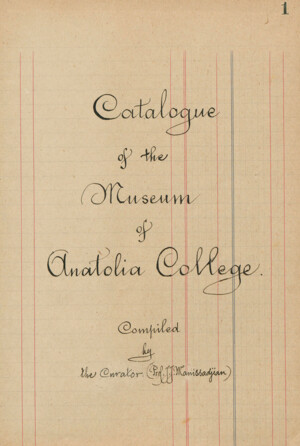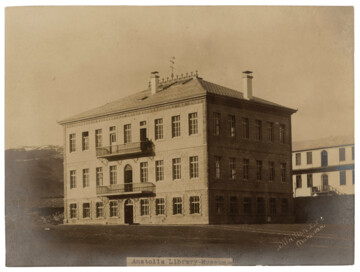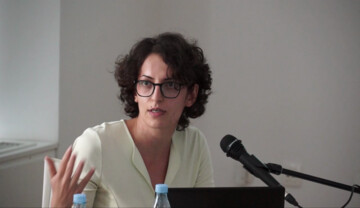Geopolitics and event
In the field of visual culture, there is a considerable → tendency to ‘→ decolonise’ and histories through exhibition/project making. These processes aim to shift, chart and retrieve spatial-cultural narratives as investigative markers examining geopolitics as an evental space of intentions and causalities. To some extent, this is due to the crisis of → representation, the unevenness of geographies and the proliferation of political conflicts.
For the suggested theme of geopolitics, I want to propose the term “event” linked with a set of philosophical notions that might offer insights both into the performative character of the event and its interconnection with geography. My curatorial collaboration with SALT, Istanbul, the exhibition Empty Fields (2016)[1] provides a vantage point to work through a → catastrophic meta-event, the Armenian Genocide of 1915, by exploring a hegemonic → archive “mapping” the Ottoman Empire.
In 1988 Alain Badiou[2] stated that the century had become “the site of events” – collapsing into multiple events and turning into inception and deployment. Badiou’s event generates chronological or foundational multiples, which is similar to the concept of actualisation – the so-called authentic event – in the work of Gilles Deleuze. However, Deleuze[3] also introduces the “counter-actualisation” – the performance of an event as such [via non/human actors]. Even if disastrous, the counter-actualisation is directed towards the opening to the counter-side of the event – the processual, ontological becoming, revealing the possible differentiation. In these implications, my → interest concerns how the notion of event opens up the potential of the → radical imagination connecting between site/geography, performativity and “being situated otherwise”.
More contemporary readings of the term event depart from the ontological aspect of it and propose a direct junction with geography. Ian G. R. Shaw discusses the world as an evental geography, a geo-event, i.e. a geographic thinking, thus, a preeminent condition “where events are already localised within objects themselves”.[4] Barbara Harlow[5] proposes an → alternate by working with the demarcation of geography and event by bringing in the Palestine Liberation Organisation (PLO) and African National Congress (ANC) as case studies for geopolitics. She argues[6] for an important transition regarding the place of the event – the emergence of the international law as a site – for two seemingly disconnected “apartheid/s”. The transformation is “from an age of ‘→ resistance” to “rights regimes’,” where even this new place is also “geographized or temporized”[7].
Archive and event
In 2014, I began a fellowship[8] at SALT working on the archive of the American Board of Commissioners for Foreign Missions/ABCFM. Housed at SALT, the archive’s caretaker is the American Research Institute in Turkey (ARIT). Since 2010 SALT and ARIT have been cataloguing and digitising this archive with the aim to make it open to the public regularly.[9]
The ABCFM archive contains around 300,000 textual and visual materials, dated from the 1830s to the 2000s, of internal correspondences, architectural plans and photographs related to the activities developed by American Protestant missionaries in the Ottoman Empire and, later, Turkey. The fellowship’s intention was to catalogue the archive’s vast, unorganised historical materials in the Western Armenian language which belonged to the former Armenian communities living in the Ottoman Empire. The bulk of these materials are the results of educational, cultural and religious interactions and collaborations between American missionaries and Christian native communities, primarily Armenians and Greeks before the 1915 Genocide. Thus, this repository unintentionally bears witness to these communities, and in a very direct sense, the archive is already “the writing of the event”, where the inscriptions of the event are radically contingent.
The initial starting point between SALT as an institution and my own practice is the potential meaning of the ABCFM archive that the institution houses, and the historical and cultural narratives in relation to that. The resulting “Empty Fields” exhibition concerns how to consider and generate new critical openings in an exhibition space that develop from the entanglement of the archive and the → catastrophic meta-event [of Genocide].
The term “event” focuses on the act of critically visiting such an archive, and raises enquiries: To what extent does this require a new methodology of embracing subversive intellectual gestures? How to re-read already framed colonial, ideological spaces with → agency, in order to render new openings at the convergence of history, aesthetics, and geopolitics? Is it possible to touch upon the counter-actualisation of the event [the imaginable opening to the disaster] in the exhibition space? How can a contemporary art institution such as SALT embody a temporal site of geopolitics instead of [political] aesthetics and perform a creative production as a geo-event?
The Empty Fields exhibition sets its orientation through the insights offered by my research into the ABCFM archive. The depictions of such archives conventionally suggest the display of a static, organised repository of a “past” indexed by records and artefacts, as if akin to memory. At the same time, within the archives (particularly one of different languages) it is possible to discover the dynamics of a recalcitrant space of gaps, omissions, and degrees of incompleteness and to recognise them as the main narrative to follow. To bridge or fill in what is lacking, the research path must at points be exploratory, drawing upon different fields of enquiry, disciplines or categories of knowledge. By doing so, these gaps or absences within the specialised historical archives, in their records and artefacts, offer meeting points, if not the structural foundations from which to observe in turn, the researcher’s/practitioner’s own knowledge base that is informed by a sense of community and identity, in this case Armenian.
The exhibition/project Empty Fields unfolds contingent to its thematic nature, passing through community, collective memory, loss, history, and with that, focuses on the way archives become important within the contemporary exhibition discourse. The curatorial proposition centres on absences, which allows the research paths to turn into a system through which to showcase the specific impacts of erasure and blankness and shape a narrative to follow. These narrative paths of absences included the empty data fields of the archive’s inventories, like language, geography, and data, which now indicate the epistemological and ontological fields of studies left blank after 1915.
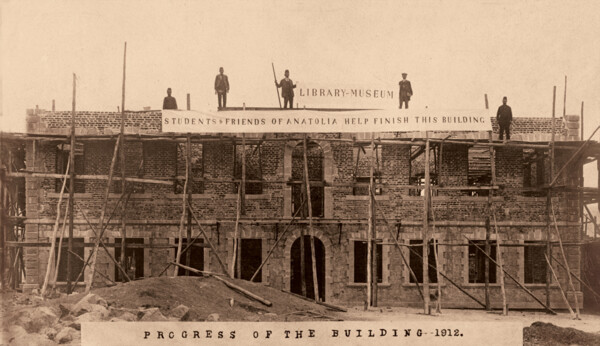
Figure 1: Library-Museum Building, Marsovan (Merzifon, currently Turkey), 1913?. Photographer: Dildilian Bros, Marsovan. Image credit: United Church of Christ (UCC), American Research Institute in Turkey (ARIT), SALT Research.

Figure 2: Construction of the library-museum building, Anatolia College, 1912. United Church of Christ (UCC), American Research Institute in Turkey (ARIT), SALT Research.
The exhibition research uncovers such a narrative embodiment of these epistemological and ontological “empty fields” – a story of the work of Armenian-German scientist Johannes “John” Jacob Manissadjian[10] and his century-old museum collection of natural history in the city of Marsovan (now Merzifon in Turkey). (Figures 1) Until the exhibition, his work was forgotten, as after the 1915 events the museum was de-institutionalised and his collection was considered lost and dispersed. The Museum was known as Anatolia College Library-Museum, and its unique collection amassed 7,000 specimens under the curatorial work of Prof. Manissadjian. The realisation of such an institution was his first disciplinary work in his native lands under the Ottoman Empire and in collaboration with the American mission.[11] The first showcase of this Museum was formed in 1891, and by 1910–1911 a Library-Museum was built to accommodate the whole collection. (Figure 2)
Figure 3: The first page of the Catalogue of The Museum of Anatolia College written by Prof. J. J. Manissadjian, 1917–18, Merzifoun (Merzifon, currently Turkey). Image credit: United Church of Christ (UCC), American Research Institute in Turkey (ARIT), SALT Research.
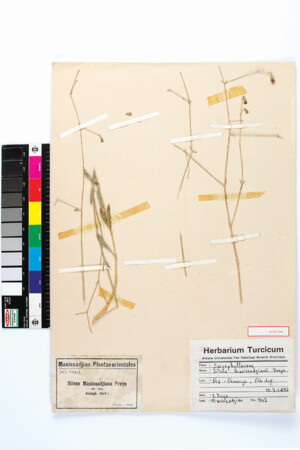
Figure 4: Silene Manissadjiana Freyn plant named after and collected by Prof. J. J. Manissadjian from Akdagh (Amasya, currently Turkey), 10 September 1892. Manissadjian: Plantae Orientales, N 942, Det. by J. Freyn. Courtesy of Ankara Üniversitesi Fen Fakültesi Herbaryumu (ANK).
In 2015 my research came across to a bound, handwritten catalogue – the Catalogue of the Museum of Anatolia College by Prof. Manissadjian – in the AFCBM archive.[12] (Figure 3) Completed in 1918, after his escape from the atrocities of 1915 in his hometown Marzovan and returning[13] to the site of this catastrophe to compile the catalogue of the museum, Prof. Manissadjian’s act was “the writing of the disaster” in Maurice Blanchot’s terms. In the catalogue, he labels all specimens as well as around eighteen showcases of the museum, often with detailed descriptions. This taxonomic museum catalogue attests to a cohesive collection of the world, and simultaneously foresees the inevitable dispersal of its artefacts. Manissadjian’s last curatorial act became his first archival act; its discovery a century later in the American Board Archives gaining a renewed signification. Working with this document, Empty Fields traces the routes of dispersal of a number of the original showcases and their contents. Unexpectedly, the research also arrived at the point of discovering some remainders of the Museum’s collection and display cases spread throughout Turkey and around the world, abstracted and lacking provenances. In this context, each catalogue page is the marker of a lost historical lost landscape, which before 1915 had been about filling the “free fields” of disciplines, i.e., science, geology and geography, as mapped by Prof. Manissadjian. But now it is the emptied showcases and displays with only references to their absences. (Figure 4)
The ABCFM archive is already stored in a contemporary arts and cultural institution, in SALT, which provides a complex and possible platform to work with. In Empty Fields, my position is in-between the different expectations of institutions and associated communities who project their desire for the return of a cohesive historical narrative. But this is precisely in contrast to the geopolitical reality and the archive, which emphasises the parts of a broken mosaic. In the case of Empty Fields, the term “event” refers to Harlow notion of being “geographised or temporised” by accepting disconnections and absences as a part of the main, dominant geopolitical narrative, which includes finding the contemporary remnants of collections, but now as abstractions. Furthermore, the multiple sites of the event turn into ontological becomings, here by the discovery of Manissadjian’s narrative through his catalogue. In this set-up, the critical question to be asked is how to negotiate a conflict within the material-visual space of the exhibition, in SALT, in the geopolitised space of Turkey, and how curating should connect back with people, to multiple communities whose routes once passed through this → archive.

